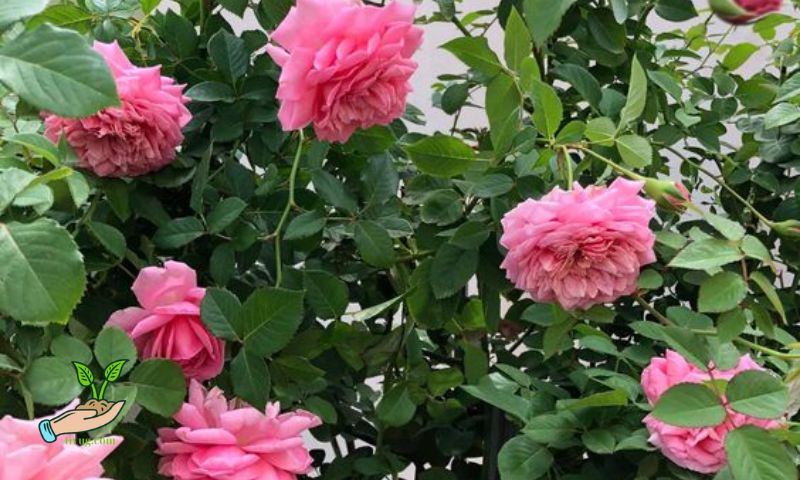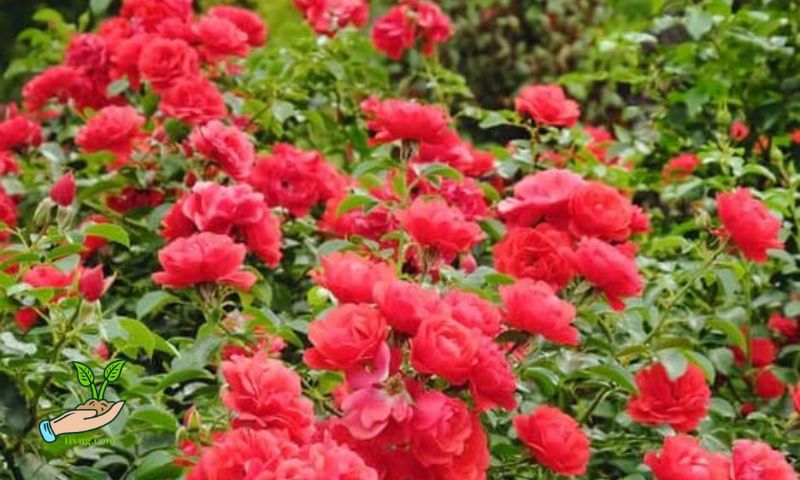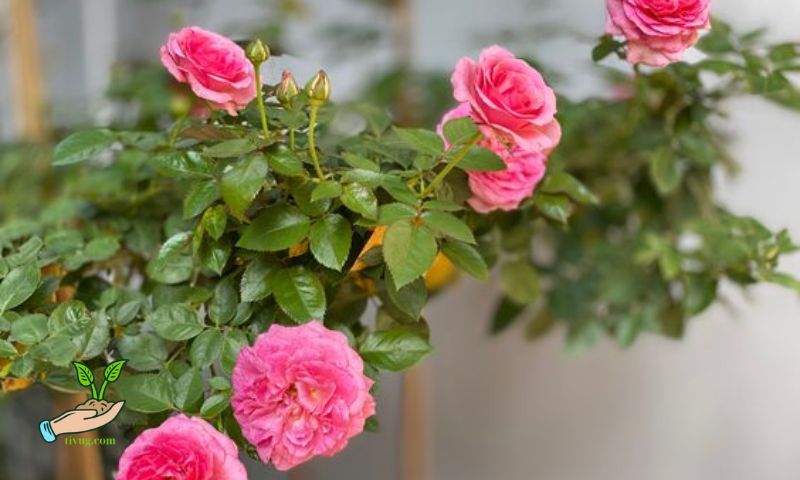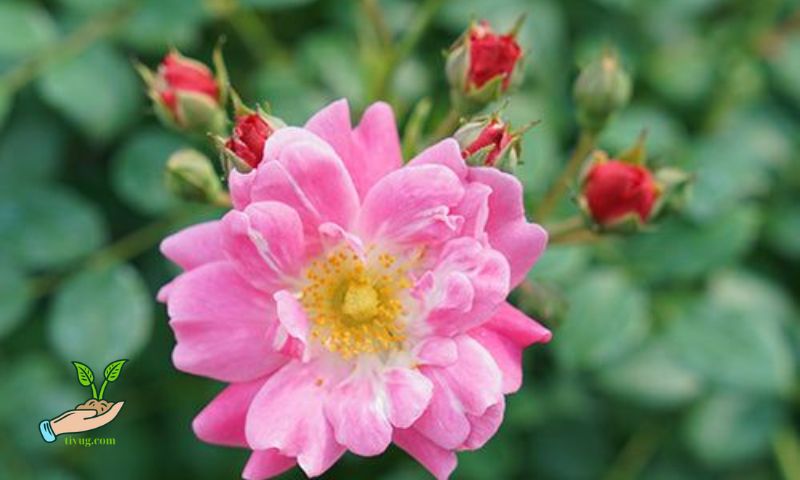Roses are cherished in gardens worldwide for their beauty and fragrance. However, they are not immune to various diseases that can compromise their health and aesthetics. Understanding the common diseases of roses and how to manage them is crucial for maintaining vibrant and healthy plants. In this article, we will explore the most frequent rose diseases, their causes, symptoms, prevention, and treatment methods to help you keep your roses flourishing.
Common Rose Diseases

Roses can be affected by several diseases, primarily caused by fungal infections. Among these, black spot, powdery mildew, rust, botrytis blight, downy mildew, rose mosaic virus, crown gall, and root rot are the most prevalent. Each disease presents unique challenges, but with proper knowledge and care, they can be managed effectively.
Black Spot
Description and Symptoms:
Black spot is one of the most common and serious diseases of roses. It manifests as circular black spots with fringed edges on the leaves. Over time, these spots cause the leaves to yellow and drop prematurely, weakening the plant and reducing its ability to photosynthesize.
Causes:
Black spot is caused by the fungus Diplocarpon rosae. The spores thrive in warm, humid conditions and are spread by water splashing onto the leaves.
Prevention:
To prevent black spots, ensure proper spacing between plants to allow for good air circulation. Remove and destroy infected leaves immediately to prevent the spread of the fungus. Water roses at the base rather than overhead to keep foliage dry.
Treatment:
If a black spot is detected, apply fungicides specifically formulated for roses. Regular monitoring and prompt action are key to managing this disease effectively.
Powdery Mildew
Description and Symptoms:
Powdery mildew appears as a white, powdery substance on the leaves, stems, and buds. Infected leaves may become distorted and stunted, reducing the plant’s vigor.
Causes:
This disease is caused by the fungus Sphaerotheca pannosa. It thrives in humid conditions with poor air circulation but can also occur in dry climates.
Prevention:
Ensure good air circulation around your roses by proper pruning and spacing. Avoid overhead watering, which can create a conducive environment for the fungus. Select resistant rose varieties when possible.
Treatment:
Treat powdery mildew with fungicides recommended for roses. Prune and remove affected parts of the plant to reduce the spread of the fungus.
Rust
Description and Symptoms:
Rust manifests as orange or rust-colored spots on the underside of leaves. These spots can coalesce, causing leaves to yellow and drop.
Causes:
Rust is caused by the fungus Phragmidium spp.. The disease spreads through spores that can be carried by wind and water.
Prevention:
Remove and destroy infected leaves as soon as they are noticed. Maintain good garden hygiene by clearing away debris and fallen leaves. Ensure proper plant spacing to enhance air circulation.
Treatment:
Apply fungicidal sprays specifically designed to control rust on roses. Regular garden maintenance and monitoring are essential to prevent rust from taking hold.
Botrytis Blight (Gray Mold)

Description and Symptoms:
Botrytis blight, or gray mold, causes a grayish mold to develop on petals, leaves and stems. Affected flowers may become discolored and deformed.
Causes:
This disease is caused by the fungus Botrytis cinerea. It is prevalent in cool, damp weather and can be spread by water and air.
Prevention:
Ensure proper spacing and pruning to promote air circulation. Avoid overhead watering, and water early in the day to allow foliage to dry. Remove and destroy infected plant parts.
Treatment:
Use appropriate fungicides to treat botrytis blight. Maintaining a clean garden environment and practicing good cultural care are crucial to managing this disease.
Downy Mildew
Description and Symptoms:
Downy mildew appears as yellow or purple spots on the upper side of leaves, with a downy growth on the underside. It can cause significant leaf drop and weaken the plant.
Causes:
This disease is caused by the fungus Peronospora sparsa. It thrives in wet, cool conditions.
Prevention:
Ensure good drainage and air circulation around your roses. Avoid watering the foliage and water at the base of the plants. Remove and destroy infected leaves.
Treatment:
Fungicidal treatment can help control downy mildew. Regular inspection and immediate action are essential to manage this disease effectively.
Rose Mosaic Virus
Description and Symptoms:
Rose mosaic virus causes yellow patterns on the leaves, including rings, wavy lines, or mottling. Infected plants may exhibit stunted growth and reduced flower production.
Causes:
This virus is spread through infected plant material, including cuttings and grafts.
Prevention:
Use virus-free plants and rootstocks when propagating roses. Regularly inspect plants for symptoms and remove any infected specimens to prevent the virus from spreading.
Treatment:
There is no cure for rose mosaic virus. The best approach is to remove and destroy infected plants to prevent the spread of the virus to healthy plants.
Crown Gall

Description and Symptoms:
Crown gall manifests as swollen, tumor-like growths on the stems or roots of the plant. These galls can girdle the stem, restricting water and nutrient flow.
Causes:
The disease is caused by the bacterium Agrobacterium tumefaciens. It enters the plant through wounds or natural openings.
Prevention:
Avoid injuring plants, especially near the soil line. Use clean and sterilized gardening tools to prevent the spread of the bacterium.
Treatment:
Remove and destroy infected plants. Disinfect tools and soil to prevent reinfection. There are no effective chemical treatments for crown gall.
Root Rot
Description and Symptoms:
Root rot causes wilting, yellowing leaves, and poor growth. In severe cases, the roots may appear dark, mushy, and decayed.
Causes:
Root rot is typically caused by fungal infections due to poor drainage and overly wet soil conditions.
Prevention:
Ensure well-drained soil and avoid overwatering. Plant roses in raised beds or amend the soil with organic matter to improve drainage.
Treatment:
Improve soil drainage by amending with sand or organic matter. Fungicidal treatments can help manage the disease, but prevention is the most effective strategy.
Conclusion
Roses, despite their beauty, can be susceptible to a variety of diseases. Regular monitoring, proper garden hygiene, and prompt action are essential to managing these diseases effectively. By understanding the common diseases of roses, their causes, symptoms, prevention, and treatment methods, you can ensure your rose plants remain healthy and continue to bring beauty to your garden. Implementing these preventive measures and treatments will help you enjoy vibrant, disease-free roses for years to come.

